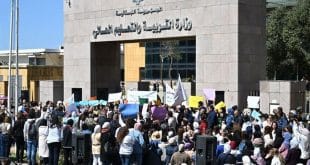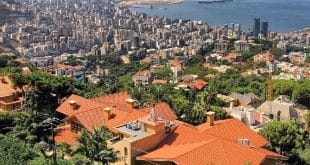“لبنان في مهب الريح”: أرقام ضخمة والتعثر مستمر!
بعد الحرب الإسرائيلية الأخيرة، يواجه لبنان تحديات غير مسبوقة، حيث خلفت هذه الحرب آثارًا مدمرة في العديد من المناطق، ما أثار تساؤلات عميقة حول قدرة البلاد على التعافي والإعمار. في ظل الأوضاع الحالية، يتساءل الكثيرون: هل سيتمكن لبنان من تجاوز هذه الأزمة الضخمة؟
في حديثه لـ “ليبانون ديبايت”، يكشف الباحث في “الدولية للمعلومات”، محمد شمس الدين، عن الأرقام الأولية للأضرار الناجمة عن الحرب، موضحًا أن “المسوحات شبه النهائية حول الأضرار تشير إلى أن عدد الوحدات السكنية المدمرة كليًا في مناطق الضاحية الجنوبية، البقاع، والجنوب قد بلغ 51 ألف وحدة سكنية. في حين تضرر 317 ألف وحدة سكنية بشكل جزئي أو طفيف”.
ويضيف شمس الدين أن “كلفة إعادة الإعمار الحالية تقدر بحوالي 8 مليارات دولار، وهذه التكلفة قد ترتفع إذا تم احتساب الأضرار التي لحقت بالممتلكات التجارية والصناعية. لكن، من المهم أن نلاحظ أن الأضرار الاقتصادية والتجارية لا يمكن تعويضها بشكل كامل، حيث تقتصر التعويضات عادة على إعادة بناء المؤسسات فقط، دون تعويض للأجهزة والمعدات التي كانت داخلها”.
وفيما يخص الأضرار التي طالت البنية التحتية، مثل الطرقات، أعمدة الكهرباء، والاتصالات، يلفت شمس الدين إلى أن هذه الأضرار تُقدر بحوالي 700 مليون دولار، حيث تم تدمير هذه المعالم بشكل كامل. وبالتالي، تتراوح التكلفة الإجمالية لإعادة الإعمار بين 8 مليار دولار كحد أدنى و 10 مليار دولار كحد أقصى. ومن المتوقع أن يتم توزيع هذه التكلفة على مدار أربع سنوات، بحيث يُتوقع أن يُنفق نحو 4 مليار دولار في السنة الأولى، بينما يُخصص المبلغ المتبقي على السنوات الثلاث التالية.
وفي ختام حديثه، أكد شمس الدين أنه “حتى الآن، لم تتوفر الأموال اللازمة لتنفيذ عملية الإعمار بالكامل. تم تخصيص أموال محدودة فقط لترميم بعض الأضرار جزئيًا، بالإضافة إلى تعويضات بدل الإيواء للمتضررين من فقدان منازلهم. مما يجعل انطلاقة مشروع الإعمار متعثرة في ظل التكاليف الضخمة والتحديات المحلية والدولية التي تواجه تنفيذ هذه العملية”.
“Lebanon in the Eye of the Storm”: Huge Figures and Continued Stagnation!
Following the recent Israeli war, Lebanon is facing unprecedented challenges, as the devastating effects of the war have left large-scale destruction in several areas. This has raised major questions about the country’s ability to recover and rebuild. With the current situation in mind, many are asking: Will Lebanon be able to overcome this massive crisis?
In an interview with “Lebanon Debate”, researcher at “International Information”, Mohammad Shamseddine, reveals the preliminary damage figures caused by the war. He states that “the near-final surveys of the damage indicate that the number of completely destroyed housing units in areas such as the Southern Suburb, Bekaa, and the South has reached 51,000 units, while 317,000 housing units were partially or slightly damaged.”
Shamseddine adds that “the current cost of reconstruction is estimated at around 8 billion dollars, a figure that could increase if commercial and industrial property damages are included. However, it’s important to note that economic and commercial damages cannot be fully compensated, as compensation is usually limited to rebuilding the institutions, without reimbursing the equipment and machinery that were inside them.”
Regarding infrastructure damages, such as roads, electrical pylons, and telecommunications, Shamseddine points out that these damages are estimated at around 700 million dollars, with these vital structures having been completely destroyed. As a result, the total cost of reconstruction is expected to range between 8 billion dollars at a minimum and 10 billion dollars at a maximum. The total cost is expected to be spread over four years, with around 4 billion dollars projected to be spent in the first year, while the remaining amount will be allocated for the following three years.
Concluding his remarks, Shamseddine confirmed that “so far, the necessary funds to fully carry out the reconstruction process have not been secured. Only limited funds have been allocated for partial repairs and compensation for those who have lost their homes. This makes the launch of the reconstruction project slow and difficult, especially considering the huge costs and the local and international challenges that are associated with implementing this process.”
Translated by economyscopes team
المصدر: ليبانون ديبايت
 سكوبات عالمية إقتصادية – EconomyScopes إجعل موقعنا خيارك ومصدرك الأنسب للأخبار الإقتصادية المحلية والعربية والعالمية على أنواعها بالإضافة الى نشر مجموعة لا بأس بها من فرص العمل في لبنان والشرق الأوسط والعالم
سكوبات عالمية إقتصادية – EconomyScopes إجعل موقعنا خيارك ومصدرك الأنسب للأخبار الإقتصادية المحلية والعربية والعالمية على أنواعها بالإضافة الى نشر مجموعة لا بأس بها من فرص العمل في لبنان والشرق الأوسط والعالم




